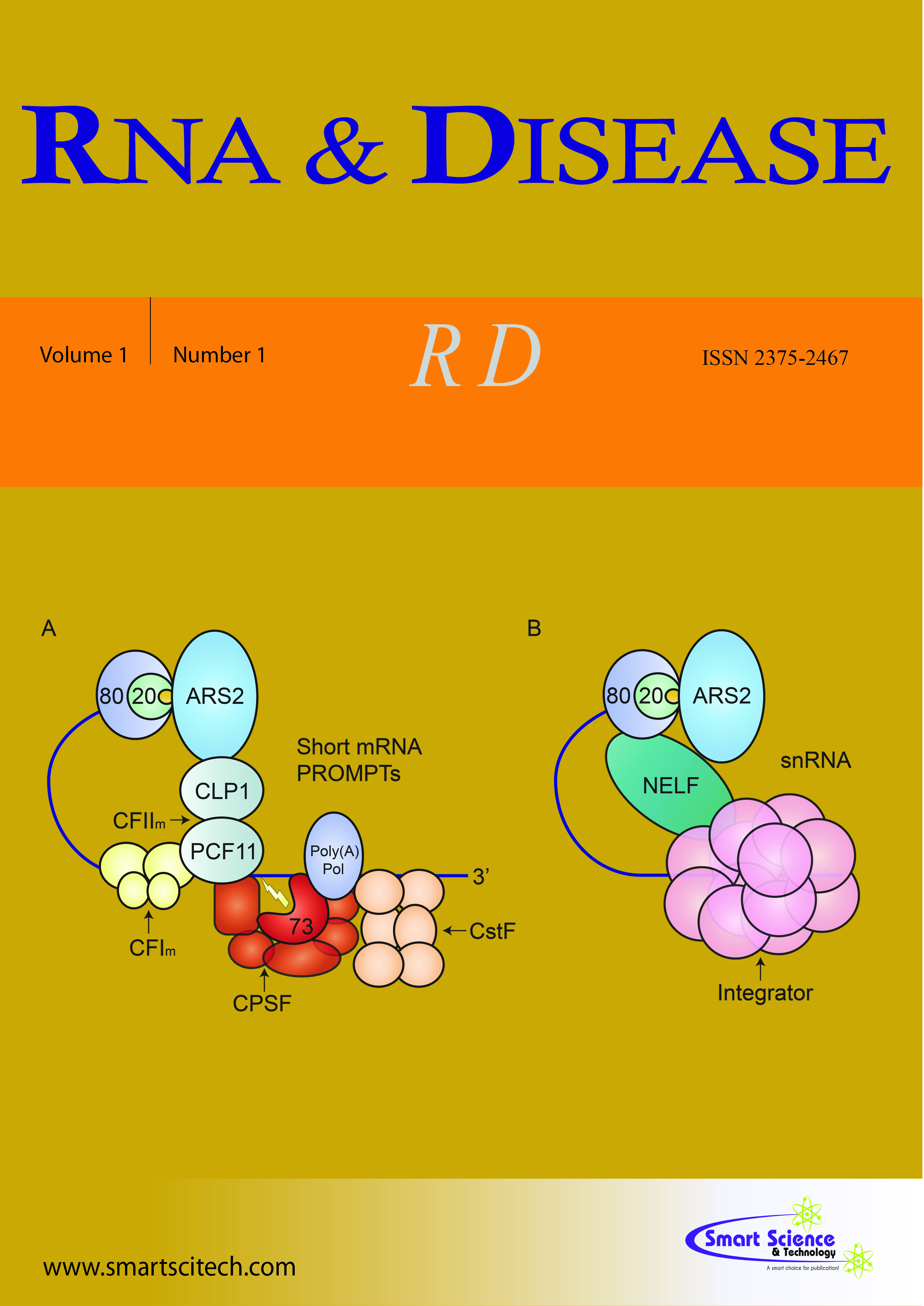Analysis of RNA Exosome Subunit Transcript Abundance Across Tissues: Implications for Neurological Disease Pathogenesis
10.14800/rd.1247
Abstract
Exosomopathies are a collection of rare diseases caused by mutations in genes that encode structural subunits of a ribonuclease complex termed the RNA exosome. The RNA exosome mediates both RNA processing and degradation of multiple classes of RNA. This complex is evolutionarily conserved and required for fundamental cellular functions, including rRNA processing. Recently, missense mutations in genes encoding structural subunits of the RNA exosome complex have been linked to a variety of distinct neurological diseases, many of them childhood neuronopathies with at least some cerebellar atrophy. Understanding how these missense mutations lead to the disparate clinical presentations that have been reported for this class of diseases necessitates investigation of how these specific changes alter cell-specific RNA exosome function. Although the RNA exosome complex is routinely referred to as ubiquitously expressed, little is known about the tissue- or cell-specific expression of the RNA exosome complex or any individual subunit. Here, we leverage publicly available RNA-sequencing data to analyze RNA exosome subunit transcript levels in healthy human tissues, focusing on those tissues that are impacted in exosomopathy patients described in clinical reports. This analysis provides evidence to support the characterization of the RNA exosome as ubiquitously expressed with transcript levels for the individual subunits that vary in different tissues. However, the cerebellar hemisphere and cerebellum have high levels of nearly all RNA exosome subunit transcripts. These findings could suggest that the cerebellum has a high requirement for RNA exosome function and potentially explain why cerebellar pathology is common in RNA exosomopathies.












